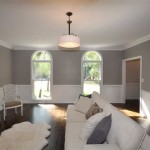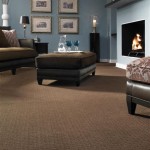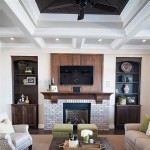Living Room End Table Sets: A Comprehensive Guide
End table sets are a common addition to many living rooms, offering both functionality and aesthetic appeal. They provide surfaces for lamps, drinks, books, and decorative items, contributing to the overall organization and style of the space. This article will explore the various aspects of living room end table sets, including their types, materials, styles, selection criteria, and proper placement.
Types of End Table Sets
End table sets are generally offered in various configurations, most commonly as pairs or sets of three. The variations primarily arise from differences in size, shape, and features. Understanding these differences is crucial for selecting the right set to complement a particular living room layout and design.
Paired end tables, the most prevalent option, consist of two identical or visually coordinating tables. These are frequently positioned on either side of a sofa or between chairs, creating a symmetrical and balanced look. They are well-suited for larger living rooms where symmetry is a desirable characteristic.
Sets of three often include two smaller end tables and one larger coffee table, or three end tables of varying heights. The purpose of this configuration is to offer varying surfaces and levels of visual interest. This type is useful for situations where a conventional coffee table may be too large, or where the multiple surfaces offer more adaptability for different needs.
Nesting end tables are sets that consist of tables of varying sizes that can be stored one inside the other, saving space when not needed. These are particularly valuable for small living rooms where maximizing available floor space is vital. They provide modular functionality and are easily deployed or retracted as needed.
Console tables, while technically not end tables, often serve a similar function when positioned against a wall in a living room. A console table set might include coordinating end tables, creating a cohesive design theme. Console tables can also provide storage space, further enhancing their utility.
Materials Used in End Table Sets
The materials used in the construction of end table sets significantly impact their appearance, durability, and cost. A wide range of materials are available, each with its own unique properties and characteristics. The choice of material should be based on the desired aesthetic, the expected level of use, and the overall budget.
Wood is a popular choice for end tables due to its versatility and natural beauty. Different types of wood, such as oak, maple, pine, and walnut, offer varying grain patterns, colors, and hardness. Solid wood tables are durable and long-lasting, but can be more expensive than those made from engineered wood. Engineered wood, like plywood or MDF (Medium-Density Fiberboard), is often used in combination with wood veneers to reduce cost and improve stability.
Metal, including steel, iron, and aluminum, is often used for the frames or legs of end tables. Metal provides strength and durability, and can be finished in a variety of colors and textures. Metal end tables can have a contemporary or industrial look, depending on the design.
Glass is often used for the tops of end tables, providing a sleek and modern aesthetic. Glass tops are easy to clean and maintain, but can be prone to scratches and breakage. Tempered glass is a safer option, as it shatters into small, relatively harmless pieces if broken.
Stone, such as marble, granite, or slate, is sometimes used for end table tops, offering a luxurious and elegant appearance. Stone tops are durable and heat-resistant, but can be heavy and expensive.
Upholstered end tables, generally ottomans that can serve as both seating and a small table, are another option. These bring a touch of softness and comfort to the living room. They also often incorporate hidden storage capabilities.
Styles and Design Considerations
End table sets are available in a wide variety of styles to match different decorating schemes. The style of the end tables should complement the existing furniture and décor in the living room, creating a cohesive and harmonious look.
Traditional style end tables often feature ornate details, such as carved legs, decorative moldings, and antique finishes. They are typically made from wood and have a formal and elegant appearance.
Modern style end tables are characterized by clean lines, simple shapes, and minimal ornamentation. They often incorporate materials such as metal, glass, and wood in sleek, contemporary designs.
Contemporary style end tables blend elements of both modern and traditional styles, creating a sophisticated and updated look. They may feature curved lines, geometric shapes, and a mix of materials.
Rustic style end tables are inspired by natural elements and have a warm, inviting appearance. They are often made from reclaimed wood or distressed metal and feature a rough, textured finish.
Industrial style end tables incorporate raw materials, such as metal and wood, in a functional and minimalist design. They often feature exposed hardware and a utilitarian aesthetic.
Mid-century modern style end tables are characterized by clean lines, tapered legs, and organic shapes. They often incorporate materials such as wood and metal in a minimalist and functional design.
The size of the end tables should be proportional to the size of the furniture they are placed next to. End tables should be approximately the same height as the arm of the sofa or chair they are paired with. The shape of the end tables should also be considered. Round end tables can soften the look of a room, while square or rectangular end tables can provide a more structured appearance.
Selecting the Right End Table Set
Choosing the appropriate end table set involves careful consideration of the living room dimensions, the existing furniture, and the desired aesthetic. A systematic approach will help ensure that the selected set complements the space functionally and visually.
First, accurately measure the available space. This includes measuring the height of sofa arms, analyzing the space between seating arrangements, and estimating floor area. These measurements will help determine the ideal size and shape of the end tables.
Next, assess the existing furniture and décor. The end table set should complement the style, color, and materials of the other pieces in the living room. Consider the overall design theme, such as traditional, modern, or rustic, and choose end tables that fit that theme.
Determine the primary function of the end tables. If they are intended for holding lamps, choose end tables with ample surface area and adequate height. If they are intended for storage, consider end tables with drawers or shelves. If they are mainly for decorative purposes, focus on the aesthetic appeal of the tables.
Consider the material of the end tables. Choose materials that are durable, easy to clean, and resistant to scratches and stains. If there are children or pets in the house, consider materials that are less likely to break or tip over.
Set a budget for the end table set. End tables can range in price from affordable to expensive, depending on the materials, construction, and design. Establish a budget before shopping to avoid overspending.
Proper Placement of End Tables
The placement of end tables can significantly impact the overall look and feel of the living room. Proper placement ensures that the tables are functional and aesthetically pleasing.
Position end tables within easy reach of seating areas. Ideally, end tables should be placed next to sofas, chairs, and other seating furniture, allowing occupants to easily reach for drinks, books, or other items.
Maintain a consistent height between the arm of the seating furniture and the top surface of the end table. The tables should be close to the same height as the arm of the sofa or chair, typically within a few inches, to provide a comfortable and accessible surface.
Use end tables to create symmetry and balance. In many cases, placing identical or similar end tables on either side of a sofa or fireplace can create a balanced and visually appealing look. This works especially well in larger living rooms.
Consider the traffic flow in the living room. Avoid placing end tables in areas where they might obstruct pathways or create a tripping hazard. Ensure that there is enough space between the tables and other furniture to allow for easy movement.
Adjust the placement of end tables to accommodate lamps and other accessories. Position the tables so that lamps are at the correct height for reading or task lighting. Use the tabletops for decorative items, such as vases, candles, or picture frames.
In smaller living rooms, use nesting end tables to save space. These tables can be stored one inside the other when not needed, freeing up valuable floor space.

Vecelo 3 Piece Occasional Table Set With Coffee 2 End Tables Brown Khd Mx Ct03 Brn Dc Ns01 A2 The Home

Dingo Black 3 Piece Coffee And End Table Set With Drawers

Homcom 21 25 In Rectangle Wood Coffee Tables Set With White Storage Shelves Sofa Side Table For Living Room 839 766v01wt The Home

Lavish Home End Table With Storage Round Wire Basket Base Nesting Tables Set Of 2

Charlie 3 Piece Wood Coffee Table Set With Storage

Vecelo 3 Piece Occasional Table Set With Coffee 2 End Tables Brown Khd Mx Ct03 Brn Dc Ns01 A2 The Home

Black Round Coffee Table Set Of 2 Nesting Side End Modern Drum For Small Space Living Room Office Bedroom Cuddlewood

Greenview Loft Rustic Modern Living Room Table Set 4 Piece With Console

Rent To Own Ashley Furniture Murphy Coffee End Tables Set Of 3

Reeve Mid Century 28 Side Table Marble Acorn West Elm








